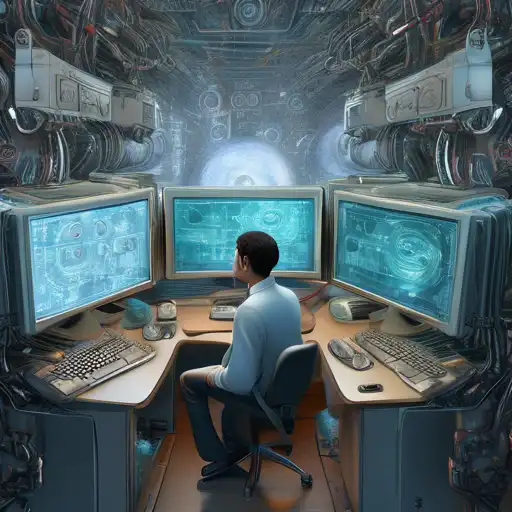Introduction to Computer Vision
Computer vision is a field of artificial intelligence that trains computers to interpret and understand the visual world. By leveraging digital images from cameras and videos and deep learning models, machines can accurately identify and classify objects — and then react to what they "see."
The Science Behind Computer Vision
At its core, computer vision involves the automatic extraction, analysis, and understanding of useful information from a single image or a sequence of images. It seeks to automate tasks that the human visual system can do. This involves methods for acquiring, processing, analyzing, and understanding digital images, and extraction of high-dimensional data from the real world to produce numerical or symbolic information.
Applications of Computer Vision
Computer vision has a wide range of applications across various industries. Here are some of the most impactful ones:
- Healthcare: From detecting tumors in radiology images to assisting in surgeries, computer vision is revolutionizing healthcare.
- Automotive: Self-driving cars use computer vision to understand their surroundings and navigate safely.
- Retail: Automated checkout systems and inventory management are made possible through computer vision.
- Security: Facial recognition technologies enhance security systems and surveillance.
Challenges in Computer Vision
Despite its advancements, computer vision faces several challenges. These include the need for large amounts of training data, the complexity of visual data, and the difficulty in achieving human-level accuracy. However, ongoing research and development in machine learning and deep learning are addressing these challenges.
The Future of Computer Vision
The future of computer vision is incredibly promising. With advancements in AI and computing power, we can expect more sophisticated and accurate systems. These systems will not only see but also understand the context of visual data, opening up new possibilities across all sectors of society.
As we continue to explore the potential of computer vision, it's clear that this technology will play a pivotal role in shaping the future of how machines interact with the world around them. From enhancing security to transforming healthcare, the possibilities are endless.
